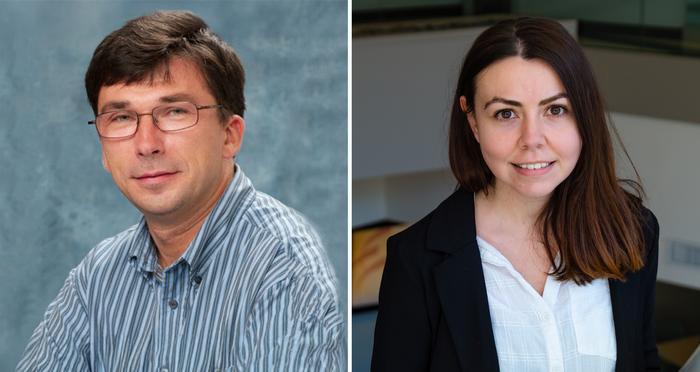Cancer has long been recognized as a devourer of energy, outpacing normal cells in its voracious appetite for nutrients required to sustain not only its growth but also its aggressive proliferation. A recent study from scientists at Sanford Burnham Prebys and the Mayo Clinic has shed light on a crucial player in the energy metabolism process within cancer cells—creatine kinases (CK). These enzymes are integral facilitators in the cellular transport mechanism for energy, specifically transferring energy molecules produced in the mitochondria, where aerobic respiration occurs, to locations across the cell where energy is needed most.
Among the various forms of CK, a particular type known as ubiquitous mitochondrial creatine kinase (uMtCK) has drawn considerable attention, particularly in the context of breast cancer research. The uMtCK operates as a linchpin in energy management within these malignant cells, effectively coordinating the transfer of ATP—adenosine triphosphate, the primary energy currency of cells. By hijacking the biochemical pathways governed by these kinases, cancer cells can maintain their high energy demands, enabling rapid cell division and survival in hostile environments.
In their groundbreaking study published in the journal Structure, researchers reported the first detailed structural insights into human uMtCK and how its form changes upon binding with creatine and adenosine triphosphate (ATP). Utilizing advanced cryogenic electron microscopy (cryo-EM), the team was able to obtain high-resolution three-dimensional images of uMtCK. This technology, which captures the position of individual atoms, provides invaluable blueprints that can inform future drug development aimed at curbing the energy-capturing capabilities of cancer cells.
The structural data obtained from this study elucidates not only the binding dynamics of uMtCK with its substrates but also its interplay with other proteins pivotal for transporting energy throughout cells. This enhanced understanding is critical, as it opens new avenues for therapeutic intervention. The research underscores the potential for designing targeted treatments that could inhibit uMtCK’s function specifically, thereby disrupting the energy supply chain of breast cancer cells without broadly tampering with other important cellular processes.
An important aspect of the study also involved the examination of CKi, the only existing CK inhibitor currently available, which the researchers evaluated for its potential efficacy in treating breast cancer. Their findings demonstrated that CKi could effectively diminish the growth of breast cancer cells. Yet caution is warranted; the study notes that CKi lacks selectivity for uMtCK, leading to the likelihood that this inhibitor may disrupt additional essential cellular functions even beyond the energy pathways associated with cancer, potentially resulting in considerable toxicity to normal cells.
The implications of this research are profound. With the foundation laid by this structural analysis, the researchers aim to collaborate further to develop novel small molecules. These new compounds would ideally be designed to selectively inhibit uMtCK, providing a more targeted therapeutic strategy. As every scientist knows, the balance between efficacy and safety is paramount in drug design—a lesson that this research clearly emphasizes.
This study’s authors have collectively contributed to the ongoing effort of understanding cancer’s metabolic dependencies. Merve Demir, as the lead author, alongside senior author Eduard Sergienko, highlights the importance of collaborative research in unraveling the complexities of cancer biology. Their findings are underpinned and supported by significant grants from reputable institutions, including the National Institutes of Health and the National Cancer Institute, signaling the high stakes involved in cancer research and the urgency for new treatment modalities.
Additionally, the findings present a wealth of data that could impact broader fields beyond cancer treatment, including metabolic disorders, where energy transport pathways are equally critical. Exploring the role of uMtCK in these diseases could reveal new dimensions and therapeutic approaches that may benefit a wider array of patients.
Given the monumental impact of energy metabolism on cancer progression, researchers are now driven to further investigate the specific pathways and molecular interactions involving uMtCK. Each piece of research contributes to constructing a comprehensive map of cellular metabolism, providing the clues needed to confront cancer par excellence. Understanding these mechanistic details at the molecular level may prove to be the key to unlocking breakthroughs in how we treat various cancers and how we can create therapies that target their unique vulnerabilities.
In conclusion, the fight against cancer is poised to make significant strides thanks to revelations from current research, such as that from the Mayo Clinic and Sanford Burnham Prebys. With every study, scientists inch closer towards understanding the intricate dance of life at the molecular level, unlocking the door to a future where cancer might no longer be an inexorable foe but rather a manageable condition.
Subject of Research: Cells
Article Title: Structural basis for substrate binding, catalysis and inhibition of cancer target mitochondrial creatine kinase by a covalent inhibitor
News Publication Date: 3-Feb-2025
Web References: DOI: 10.1016/j.str.2025.01.008
References: National Institutes of Health, National Cancer Institute, Conrad Prebys Foundation
Image Credits: Credit: Sanford Burnham Prebys
Keywords
Life sciences, Biochemistry, Pharmacology, Drug development, Drug design, Energy resources, Cellular energy, Kinases, Breast cancer cells, Kinase inhibitors, Small molecule inhibitors, Atomic structure, Protein structure, Mitochondrial function, Cancer research.
Tags: ATP transfer in malignant cellsbiochemical pathways in cancerbreast cancer treatment innovationscancer cell energy demandscreatine kinases in cancer metabolismdisruption of cancer supply chainsemerging therapies for cancer managementenergy metabolism in cancer cellsMayo Clinic cancer studiesmitochondrial creatine kinase uMtCKSanford Burnham Prebys researchstructural insights into uMtCK





